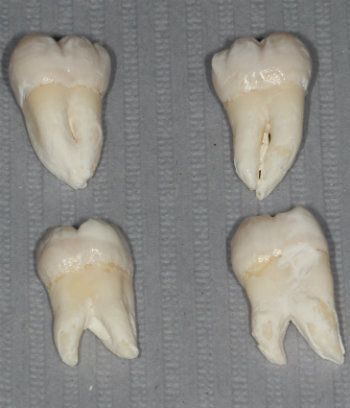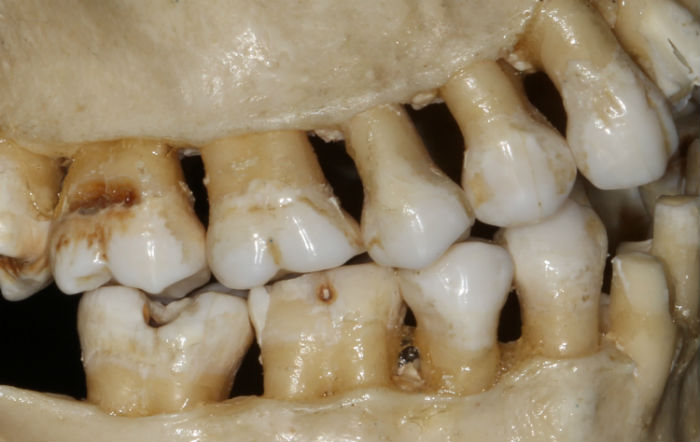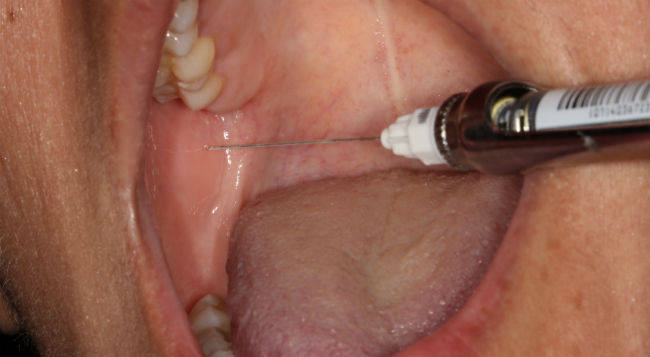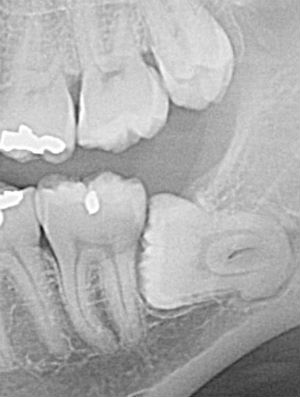In our dental office, we remove hundreds of wisdom teeth (a.k.a. third molars) per year. We perform all types of extractions – upper, lower, fully erupted, impacted, horizontal, etc. with our without IV sedation.

Only 2 of these 4 third molars resulted in significant pain afterwards. Want to guess which ones? Surgery by Dr. Nicholas Calcaterra.
As part of our review of the procedure with our patients, we always discuss post-operative pain relief. And we invariably end up saying something to the effect of:
“When the numbing wears off, you’ll likely be pain free with the top extraction sites, but for the bottom, you’ll definitely need to take the pain medications”
When we see our patients a week later for a follow-up, we then get asked:
“I didn’t feel any pain during the procedure. But the next day, how come the top wisdom teeth removal didn’t hurt but the bottom ones did?”
There are many reasons why upper (also called maxillary) third molar extraction sites often give little post-operative pain but bottom (also called mandibular) extraction sites frequently do. Here are some of the key differences:
Differences in the Bone Holding in the Teeth
Teeth are held in your jaw because they are encased in bone. The bone holds them tightly in place. So it stands to reason that if some bone is denser and can hold the tooth in more securely, those teeth will be harder to remove. Right?

This photo of a human skull shows how teeth are held in place by bone.
The bone that holds upper wisdom teeth in place is neither dense nor strong. It can best be compared to Styrofoam. On the other hand, the bone that holds lower wisdom teeth is dense, thick, and strong. It can best be compared to pine wood.
So, if you have a tooth encased in either pine wood or Styrofoam, which do you think will require more effort to get out? Of course it’s the pine. So that extra strength that holds lower wisdom teeth in place – ends up resulting in greater effort to remove – and is one reason that makes lower wisdom teeth hurt more.
Dry Socket Occurs More Often with Bottom Wisdom Teeth
Dry socket, also known as alveolar osteitis, is a painful condition that can occur after any tooth extraction. Research has shown that the incidence of dry socket for all tooth extractions is 2%, but is seen 20% of the time for impacted lower wisdom teeth.
What this means is that, generally speaking, there is a 10 times greater likelihood of a dry socket with a lower wisdom tooth than an upper. This again is another reason why lowers can hurt more.
Different Types and Number of Injections
Some of the other reasons for the difference in post-operative pain include the number and site of injections.
To properly anesthetize an upper wisdom tooth, there are only a couple of injections needed. They are typically shallow and have high success rates. While one of the injections can be painful, it does not result in significant pain post-operatively.

A mandibular block injection for a lower third molar. The needle goes at least one inch deep through muscle. Expect at least two of these injections for a lower wisdom tooth extraction.
Conversely, lower wisdom will often need multiple injections, including a minimum of two that must penetrate at least an inch through muscle. And because lower wisdom teeth can have many nerves associated with them, it is not uncommon to need 5 or 6 separate injections.
If you received multiple injections into your leg through one inch of muscle until the needle hit bone versus two injections where the needle only went in an eighth of an inch, which would hurt more the next day?
Gravity
After removal, there are empty sockets or holes where the teeth used to be. These holes are the perfect size for small pieces of food to accumulate. Significant accumulation of food can lead to delayed healing, infection, and pain.
Gravity ensures that the lower sockets accumulate much more food debris than the top. This is another reason why lower wisdom teeth surgery leads to more pain than the upper ones.
Proximity to Delicate Anatomy

This impacted lower third molar is very close to a major nerve and artery.
Impacted lower wisdom teeth are often close to very important anatomical structures such as a major nerve and artery that supply the lower jaw, chin, and other areas. In order to avoid inadvertently damaging those structures, a slow approach is often taken.
The longer a surgical site it open and manipulated, the more post-op pain and swelling will result. And the greater a likelihood of infection.
While upper third molars have their own set of considerations and risks, it is very rare that such a slow approach must be taken. In the x-ray, the upper wisdom tooth took approximately 1 minute to remove, while the lower over 20 minutes.
Which site do you think hurt more the next day?
Exparel is Typically Used for Lower Wisdom Teeth
Have you heard about Exparel? Exparel is an opioid free pain management solution – designed to relieve pain after surgery. We use it in our office after extracting four wisdom teeth. For the most part, we administer it on the bottom.
The vast majority of studies – including this one – typically test the effectiveness for lower wisdom teeth. Why? Because the top ones typically don’t hurt as much.
 Do you need a wisdom tooth or teeth removed? Interested in a consult? Want IV sedation? Call us at (203) 799 – 2929 or visit this page for an appointment.
Do you need a wisdom tooth or teeth removed? Interested in a consult? Want IV sedation? Call us at (203) 799 – 2929 or visit this page for an appointment.
